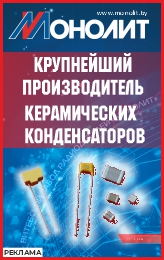Identification And Adjustment Of Geometric And Dynamic Errors
DOI: 10.22184/1993-7296.FRos.2019.13.1.24.28
The work on dynamic errors and optimization of control parameters consists in clearly identifying the coefficients of the transfer function of an open electromechanical system and selectively adapting the transfer function to certain characteristics of inertia and displacement modes [1]. The following is the basic equation (1) of an open system, including mechanics, a motor, and a regulator:
(1)
The equation (1) characterizes the complete architecture of the positioner (motor, mechanical components) and control (digital filters, PID regulators).
To identify the transfer function (1), the following stand is used (Fig. 1), which is based on the motorized positioner Standa 8MTL1401–300-LEn1-XXX.
During the primary identification of the system, it can be seen that the dynamic error of the system corresponds to ~10–1 mm (Fig. 2a) during the decay time of ~180 ms. After adjusting the regulator and adapting the transfer function WOL5(s), the error decreased almost by 10 times, i. e., to ~10–2 mm (Fig. 2b).
It is important to note that the exact identification of the WOL5(s) transfer function and its selective tuning influence the two-way repeatability [2,3]. The two-way repeatability can be measured by an external laser interferometer and, after professional tuning, can correspond to the system resolution (Fig. 3).
ANALYSIS OF STATIC ERRORS (INACCURACIES) OF THE SYSTEM
After the contour reproduced by the mechanical system becomes stable over time and also has a high repeatability, it is necessary to adjust the static errors. Static errors (precision) depend on the quality (tolerances) of parts and the assembly process, and do not depend on the dynamics of the system. In order to compensate for the inprecision of the system, it is necessary to calibrate the straight line in the case of movement along one axis X, or the calibration matrix in the case of movement in the XY plane.
The following is an example of using an external measuring system (Fig. 4) – a laser interferometer that minimizes the static error from 17 · 10–3 mm to <10–3 mm (Fig. 5).
DESIGN FEATURES
OF THE MOTORIZED POSITIONER
USED TO IDENTIFY
THE TRANSFER FUNCTION
Standa motorized positioner series 8MTL1401–300-LEn1–200 is based on three-phase linear servo technology (Fig. 6). Direct drive allows the user to move with zero play with high precision, repeatability and low friction coefficient.
As a feedback system, a linear contactless optical encoder is used, which provides direct motion control with subnanometer motion resolution. Naturally aged aluminum alloy guarantees high temperature stability and excellent long-term kinematics without a drift of the guide system [4].
The device has the following features:
• Super precision movement;
• Range of movement: 300mm;
• Encoder type: non-contact, optical;
• Encoder resolution: 200 nm;
• High-precision linear guides;
CONCLUSION
The quality of the control system depends on its precision.
The analysis of the parameters of the shift showed that the selection of the optimal architecture of the regulator, as well as its selective adjustment allows to achieve the level of dynamic error up to several micrometers, and the value of the decay time becomes equal to 100–200 ms; selective tuning of a dynamic system provides high two-way repeatability corresponding to the encoder resolution values. Also, as a result of experiments, the need for calibrating the static error with an interferometer was established, which made it possible to achieve the absolute precision of the system up to <10–3 mm.
“Leningrad Laser Systems” represents the whole range of Standa products in the territory of the Russian Federation and offers the most favourable conditions for the delivery of products, full technical support, as well as the delivery of samples. For more information, contact “LLS”.

 rus
rus TS_pub
TS_pub technospheramag
technospheramag technospheramag
technospheramag ТЕХНОСФЕРА_РИЦ
ТЕХНОСФЕРА_РИЦ


